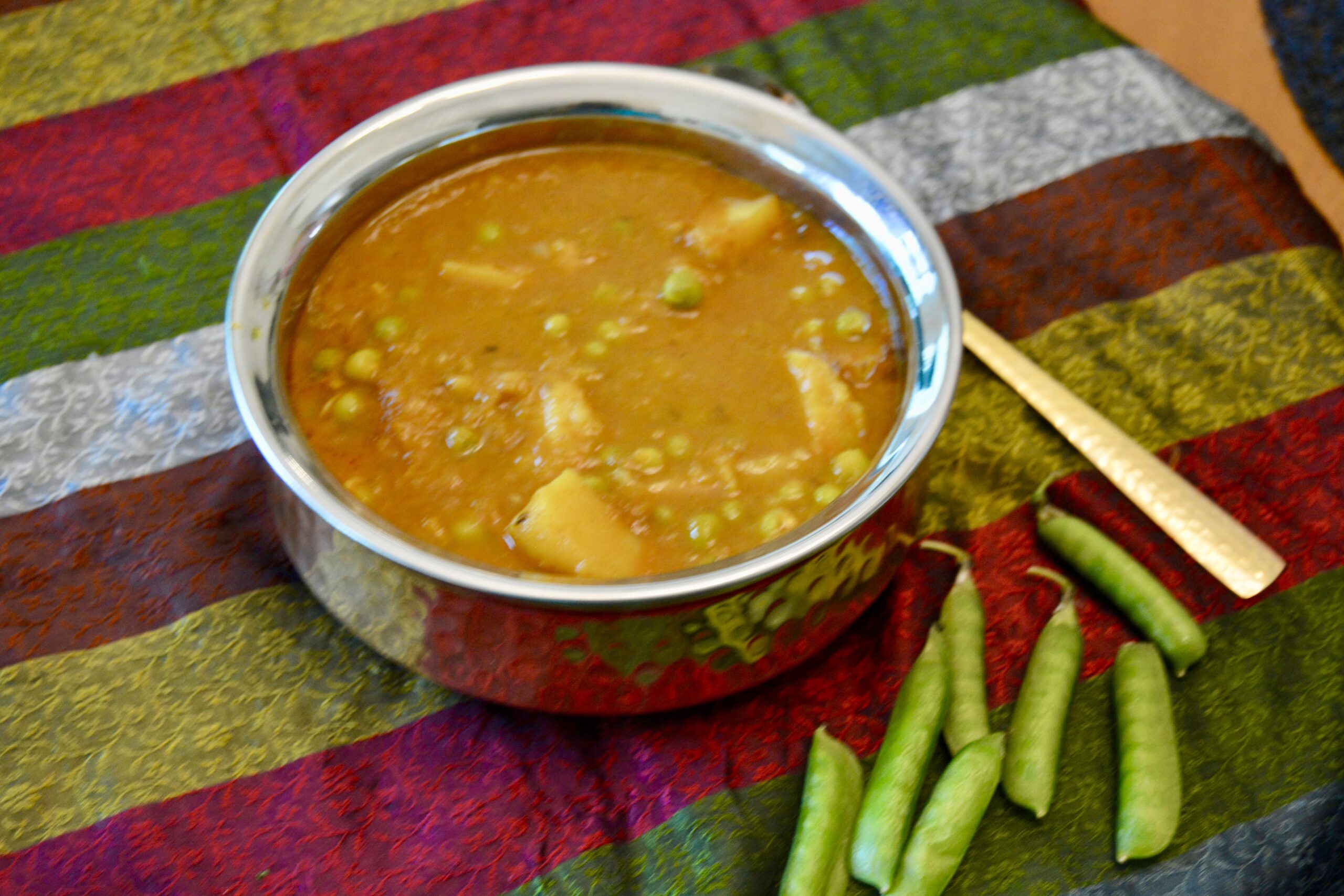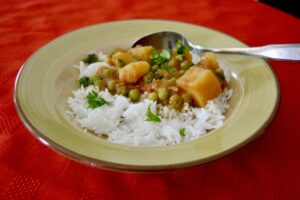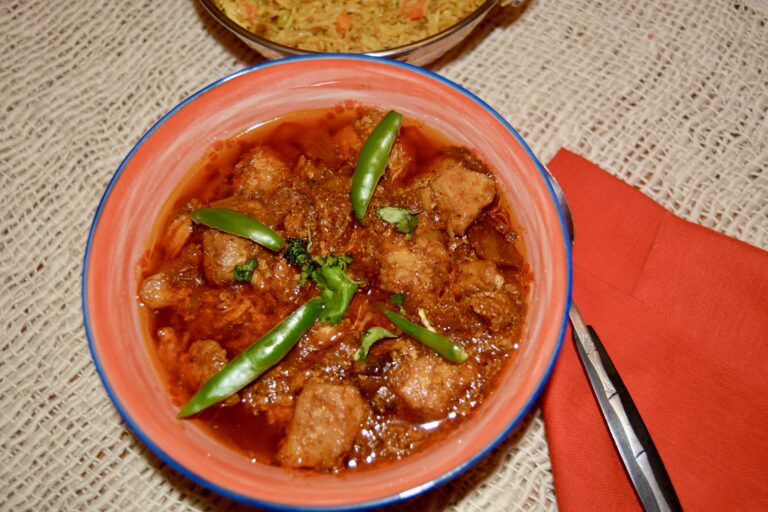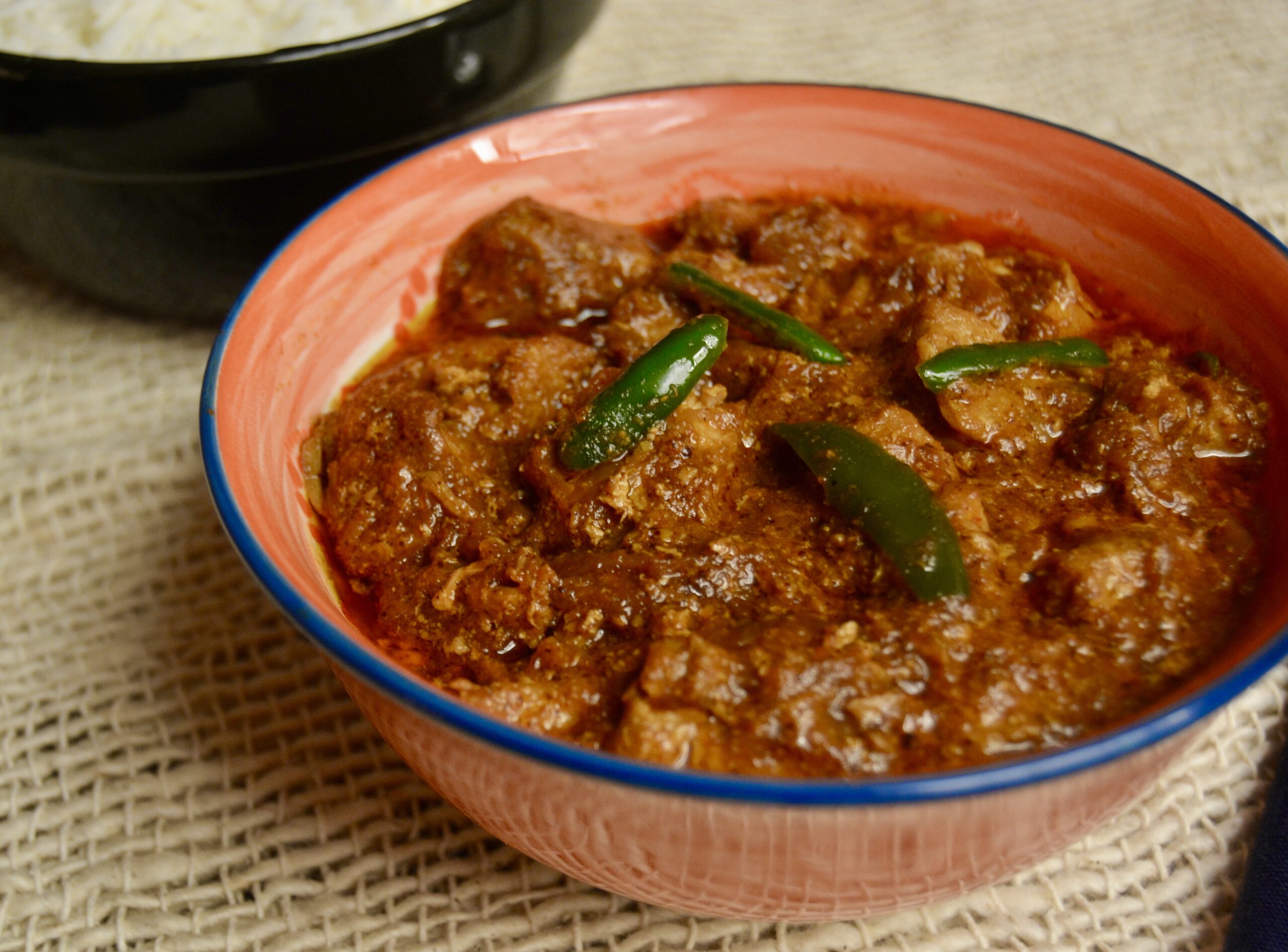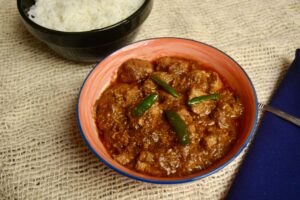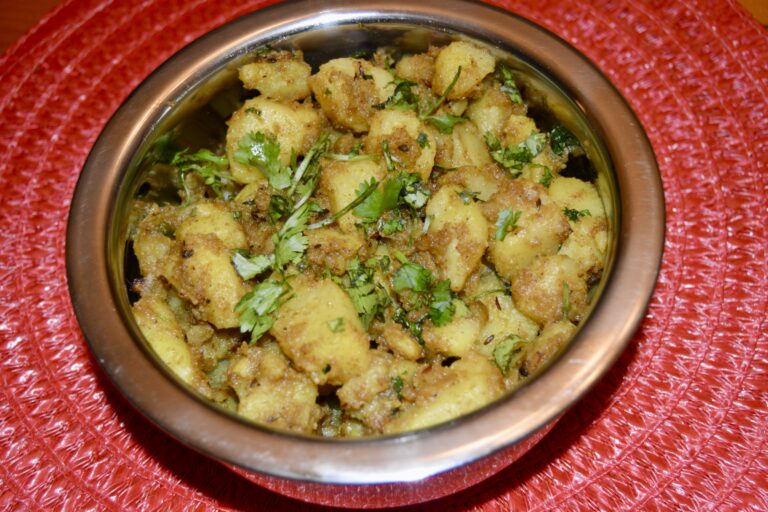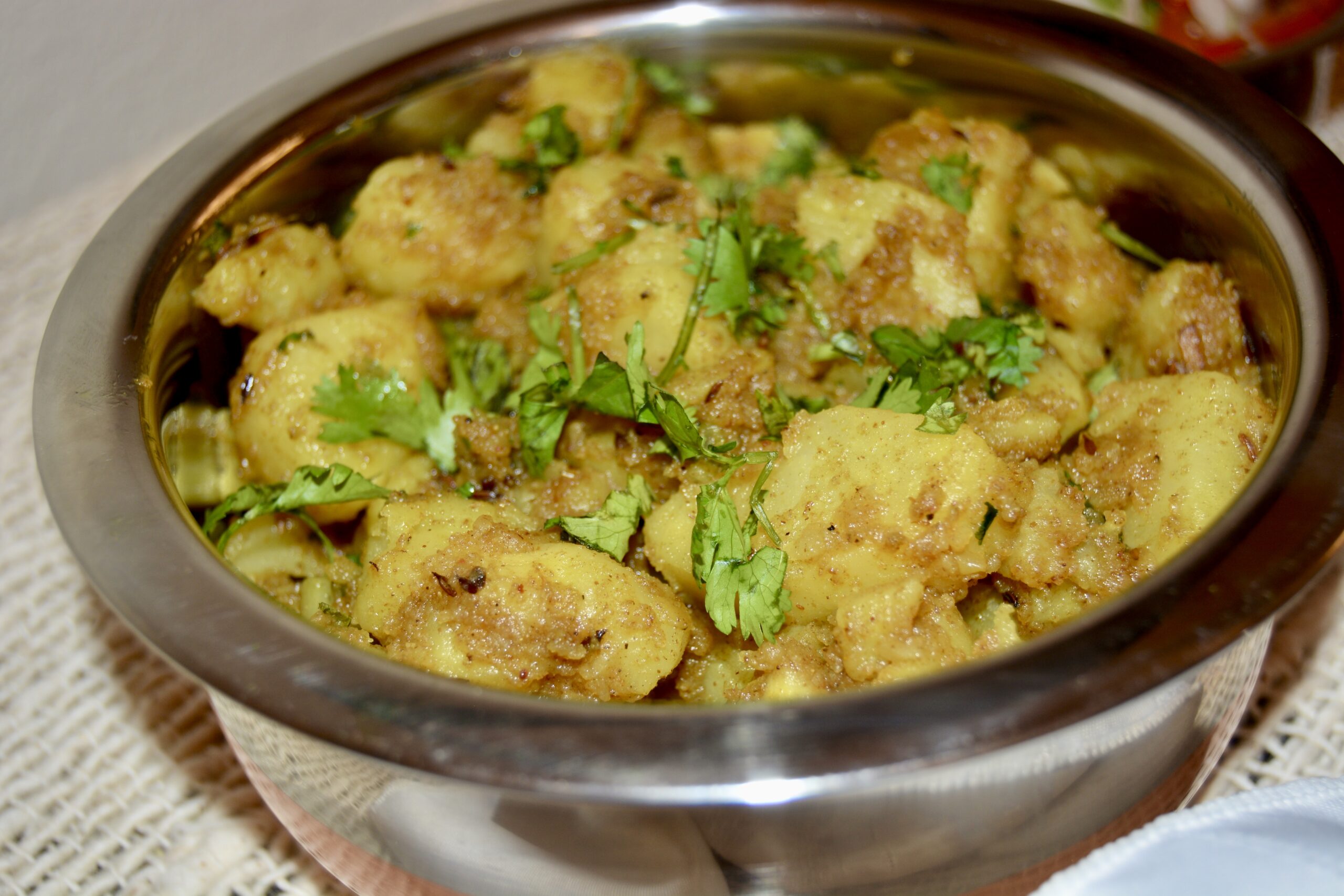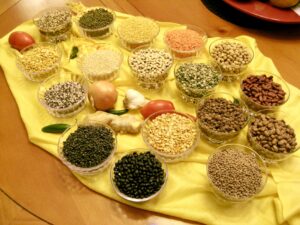 Dals are an integral part of an Indian meal, and we have a variety of them. With the abundance of dals and the many ways to season them, we could have a different dal every day of the month and not repeat a recipe!
Dals are an integral part of an Indian meal, and we have a variety of them. With the abundance of dals and the many ways to season them, we could have a different dal every day of the month and not repeat a recipe!
One of my favorites is a small brownish bean, rather like a whole green moong bean, called moth (pronounced moat) or matki. These lentils are highly nutritious and can be prepared in a variety of ways.
This particular recipe uses sprouted moth beans. It makes a great anytime snack or a side dish to a meal. Sprouted beans can also be used in salads.
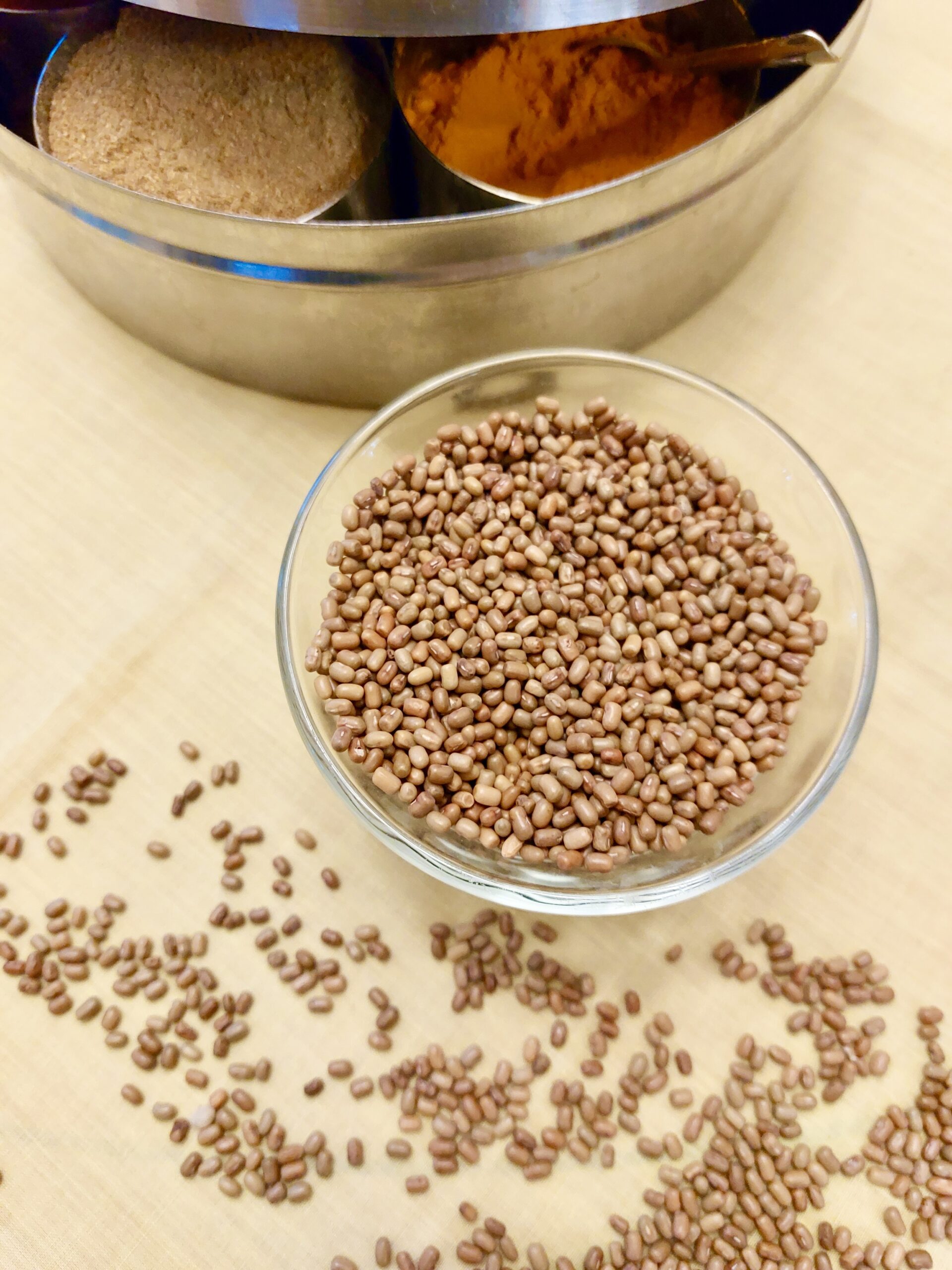
Moth/Matki Sukha Sabzi (Sauteed Moth Bean)
Ingredients
- 1 cup moth beans
- 1 medium yellow or red onion (chopped)
- 1 tsp cumin powder
- 1 tsp turmeric powder
- ¼ tsp red chili powder (or to taste)
- ⅛ tsp garam masala
- ½ tsp amchur powder (or 1 Tbsp lemon juice)
- 1 tsp salt
- 2 Tbsp cooking oil
- 1 Tbsp fresh chopped cilantro (coriander leaves) (for garnish)
Instructions
To Prepare the Dal
- Sort the moth beans clean of any grit.
- Pour into a medium bowl or pot. Wash the moth about 4 times, rubbing the beans gently between your fingers.
- Add 4-5 cups of water. It should be enough to cover the beans by about 2 inches. Leave to soak overnight or for at least 4 hours. Strain the moat and wrap them in a moist muslin/cheesecloth. A clean kitchen cloth will also do.
- Now, put the wrapped beans into the bowl or pot. Sprinkle water over them, cover them, and let them sit for two days. Be sure the cloth is kept moist so that the moth can sprout.
- After two days, they should be sprouted. Not all of them will sprout sometimes, but that is fine. If half are still not sprouted, leave them for another day to continue sprouting.
To Cook
- Lightly rinse the beans and set aside.
- Peel and dice onions reasonably small. About ¾ cup is good.
- Place a medium pan or skillet on medium heat. Heat 2 tablespoons of oil in the pan.
- Add the chopped onion.
- Sauté for 4-5 minutes until translucent and the edges start to turn golden.
- Now add all the powdered spices and salt. Sauté for 30 seconds. Don't let the spices burn.
- Add the sprouted moth beans. Stir gently so the beans are coated with the spices.
- Add ¾ cup of warm or hot water.
- Cover the pan with a lid, lower the heat to medium-low, and let simmer for about 20 minutes, stirring occasionally, until the beans are soft but not mushy.
- Sprinkle with lemon juice or amchur powder and gently stir the dal.
- Pour into a serving bowl and garnish with the chipped cilantro.
Notes
If you have a bean sprouter, you can use that to sprout the moth.

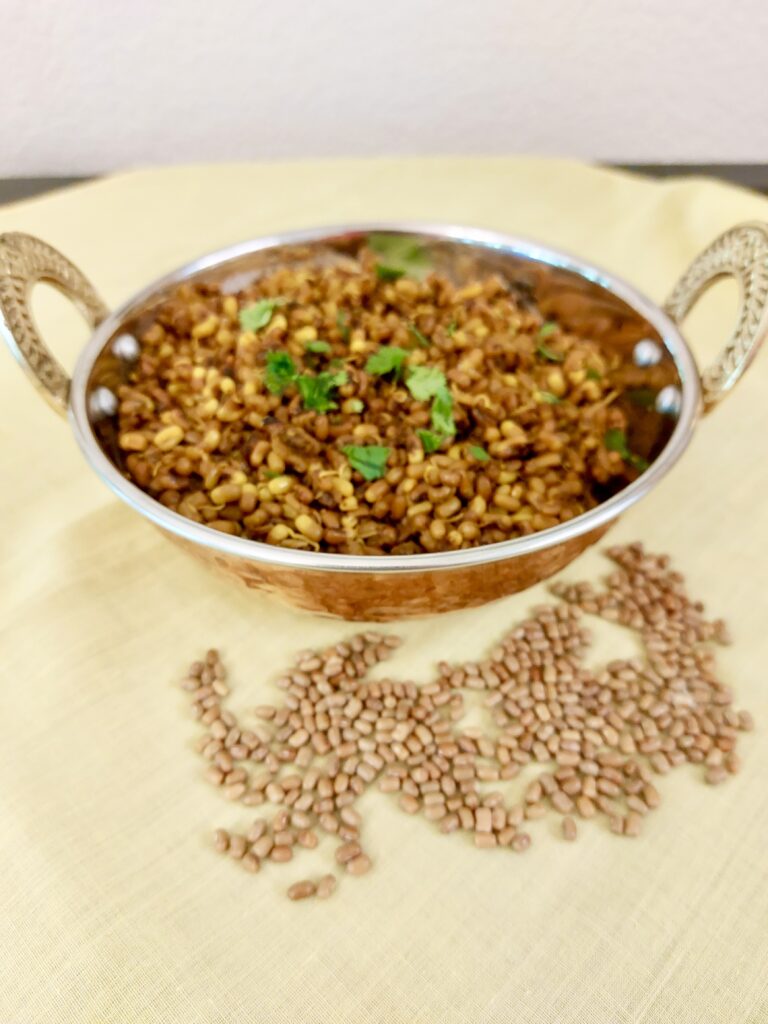
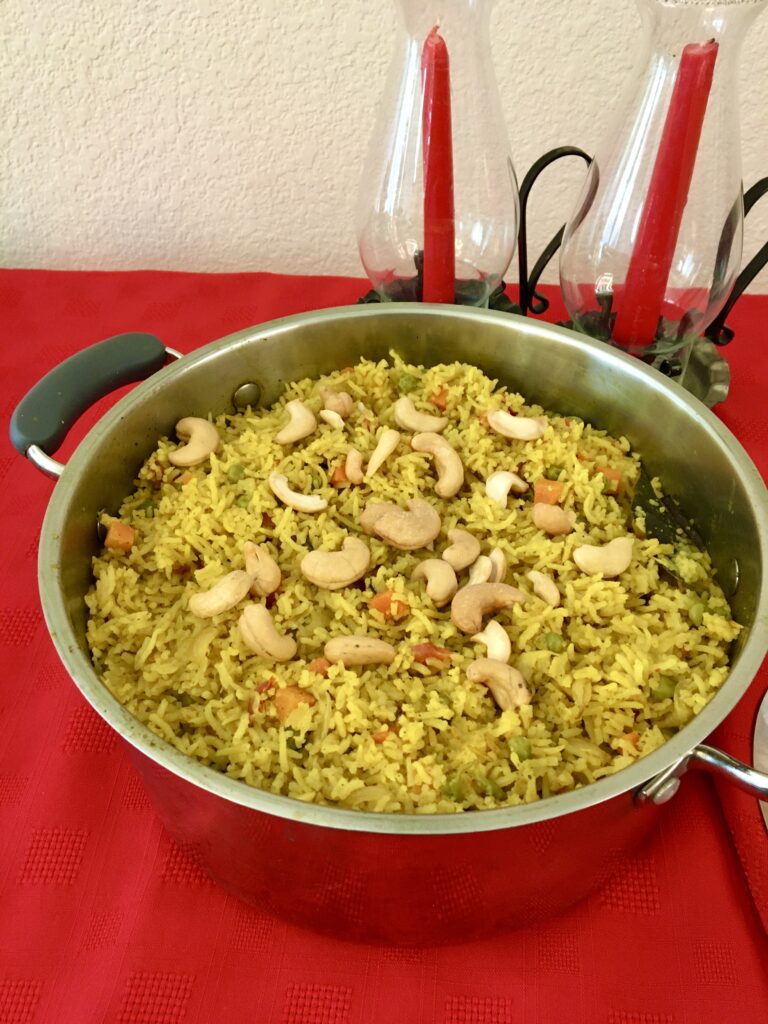
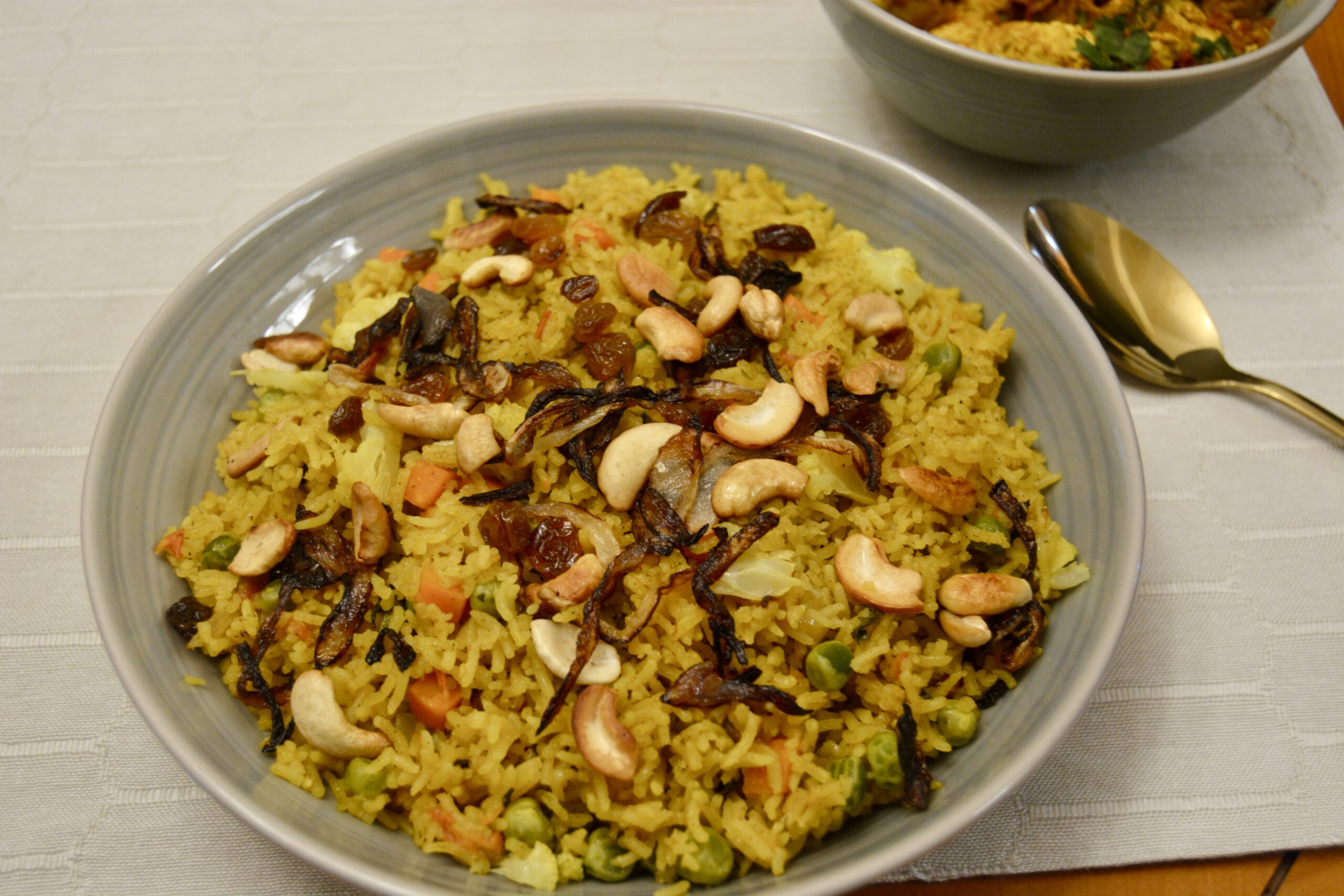
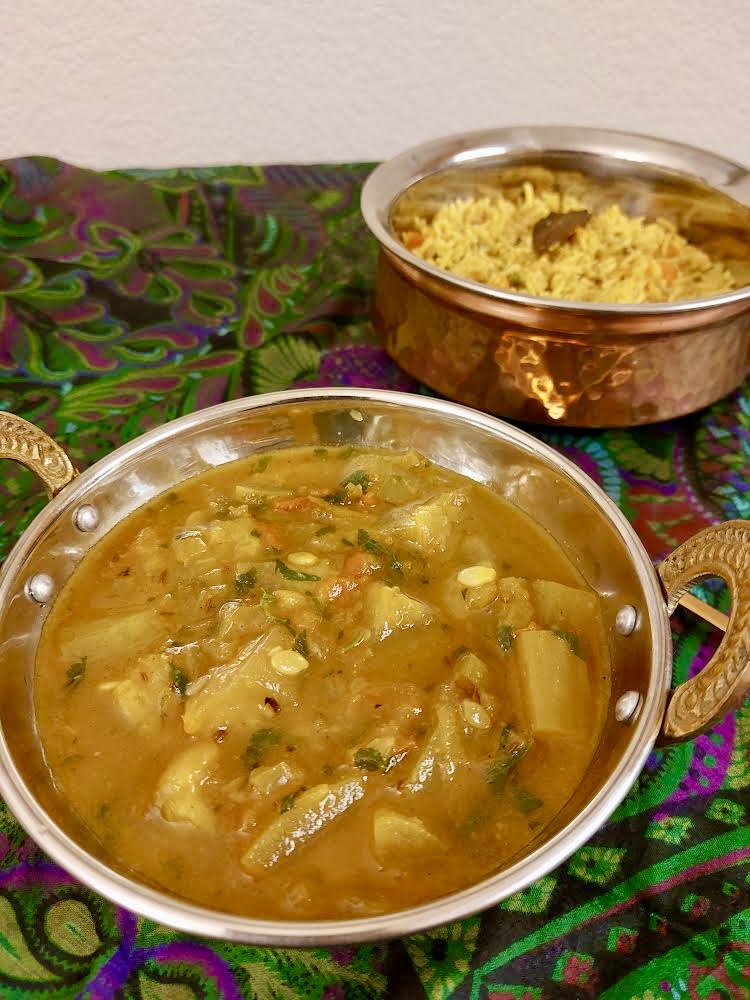
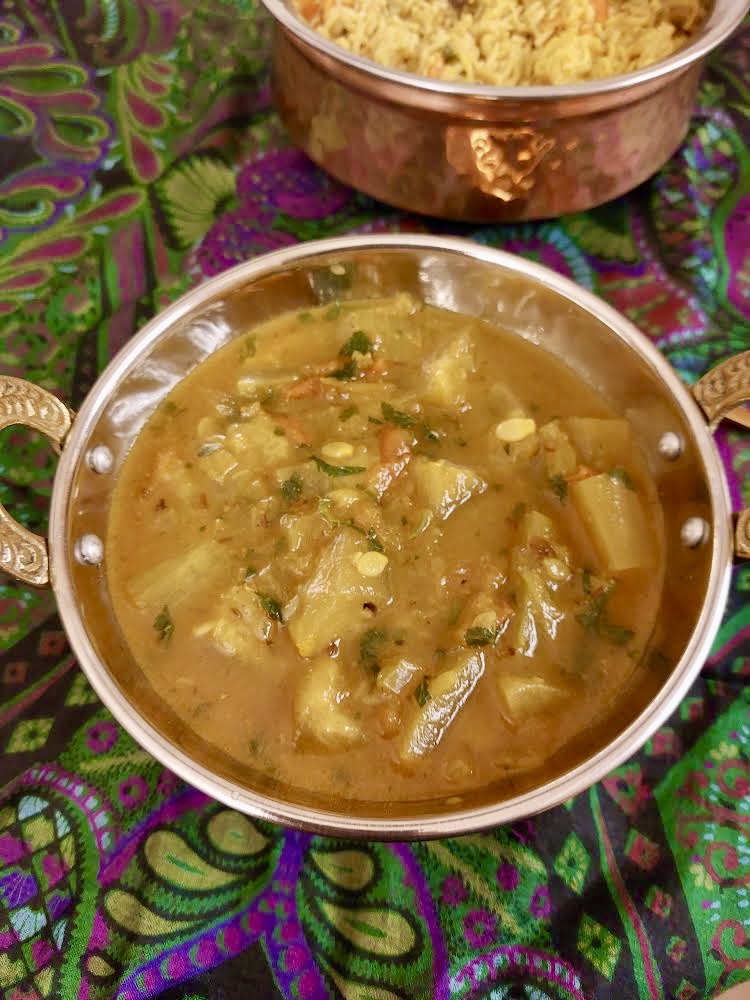
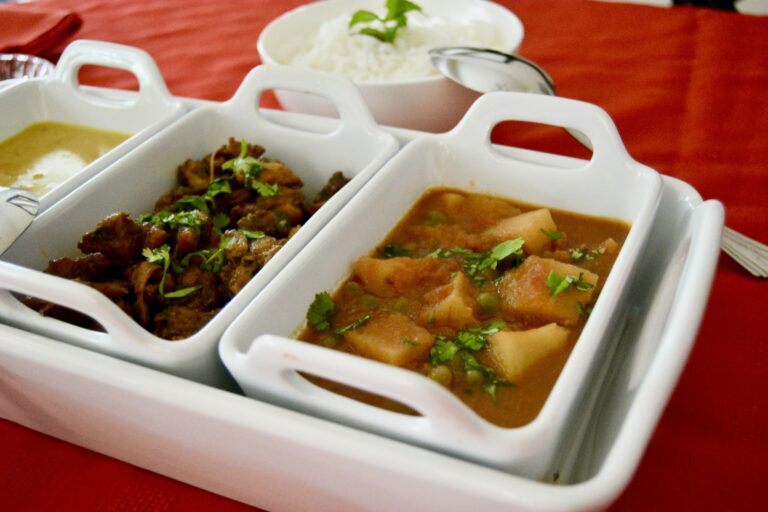
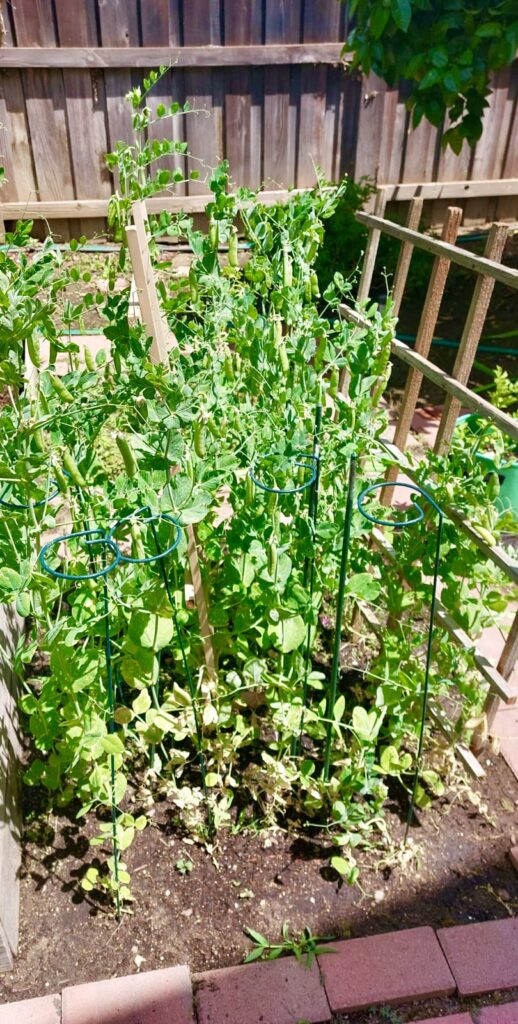 The morning is beginning to heat up. I look out my kitchen window at the small patch of peas I am growing. It needs a weeding. Armed with my garden hat, gloves, and shovel, I head out to see if I can tackle the weeds before it gets too hot. I am pleased to see that there are enough peas I can pick to fix a curry or sabzi (sautéed vegetable of any kind without gravy). A little while later, I return to the kitchen with fresh peas.
The morning is beginning to heat up. I look out my kitchen window at the small patch of peas I am growing. It needs a weeding. Armed with my garden hat, gloves, and shovel, I head out to see if I can tackle the weeds before it gets too hot. I am pleased to see that there are enough peas I can pick to fix a curry or sabzi (sautéed vegetable of any kind without gravy). A little while later, I return to the kitchen with fresh peas.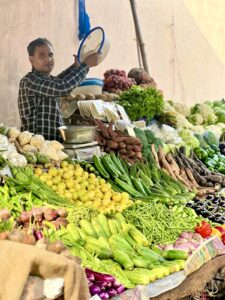 I recall walking through the sabzi mandi’s (vegetable markets) in India or stopping by the wayside vegetable vendors’ stalls by the primary market. The vegetables were always farm fresh. You would make your selection. The grocer would weigh these on scales and put them into the ‘thaila’ (cloth bag) you carried with you—before plastic bags hit the scene! Of course, there was always bargaining to be done. It was an essential part of the buying process. I didn’t bargain much, knowing how hard they worked to make a living, so I always caved. I never quite got used to it!
I recall walking through the sabzi mandi’s (vegetable markets) in India or stopping by the wayside vegetable vendors’ stalls by the primary market. The vegetables were always farm fresh. You would make your selection. The grocer would weigh these on scales and put them into the ‘thaila’ (cloth bag) you carried with you—before plastic bags hit the scene! Of course, there was always bargaining to be done. It was an essential part of the buying process. I didn’t bargain much, knowing how hard they worked to make a living, so I always caved. I never quite got used to it!